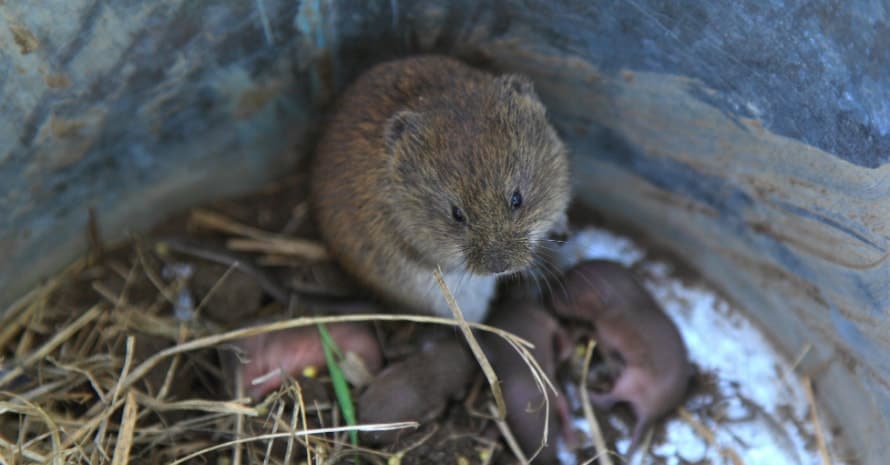Little and innocent-looking as they are, voles are still ridiculously good at messing up your backyard.
You might be wondering how to get rid of voles if you’ve seen suspicious signs such as patches of dead, rotting grass, and little holes in the ground where their tunnels come out to the surface, but how do you actually send the critters packing?
Be sure to read my tips and tricks on getting rid of voles to solve the problem for good! A list of six best vole treatments is included to help you choose the right product on the market.
What Does a Vole Look Like?
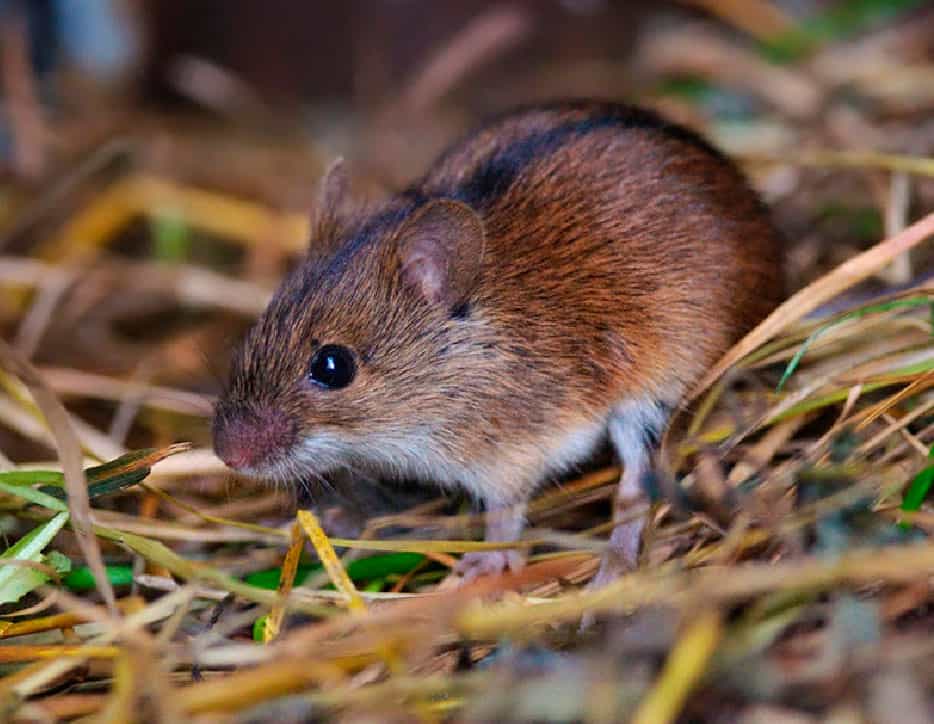
Voles, also commonly referred to as field or meadow mice, are little rodents, usually between three and seven inches long, chunky with relatively short legs.
Their coat is usually a grayish brown, but variations in color occur. Although they might look a lot like mice, these are different animals.
Another species that voles are often confused with is the shrew. Since visual identification is an important step of eradicating voles in your yard, I believe we should dwell on the subject to find out how to tell a vole from other small rodents.
Voles vs Mice
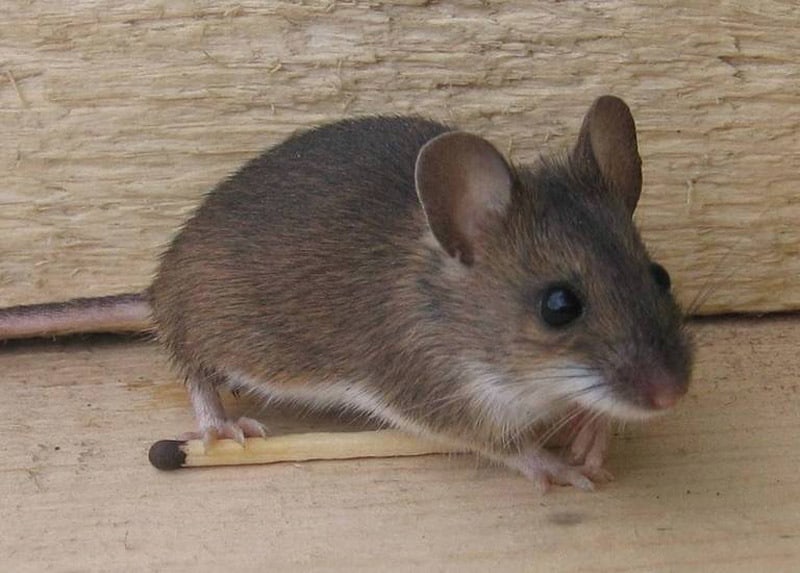
The first thing you notice if you put a vole and a mouse side by side is that the latter’s tail is considerably longer, about the size of its body, while voles have relatively short tails. They also look bulkier than most mice; their eyes, as well as ears, are much smaller.
Apart from appearance, the two species have different habits. Mice tend to stay covered against potential predators, usually looking for tight spots in your house, while voles will readily stay outdoors even during the cold season.
Voles vs Shrews
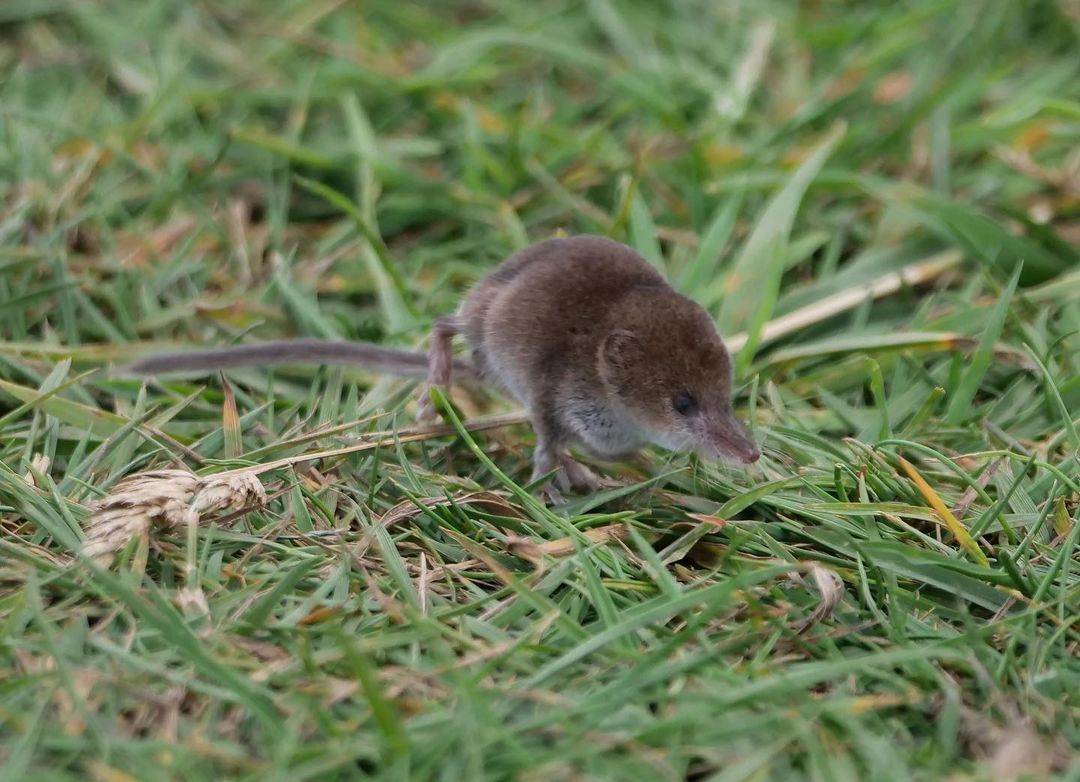
Voles have little, blunt noses, while shrews are easy to recognize due to their longish, pointed snouts that resemble those of moles. Their eyes are tiny but visible, however, they don’t have the elongated front feet that make moles stand out.
Please mind that it’s not uncommon for shrews to make use of tunnels made by other rodents, in particular voles, adding to the potential confusion. They’ve also been reported to occasionally invade people’s houses, although outdoors remains their preferred habitat.
Related Post: How to Get Rid of Shrews

Vole Habits
Voles occur in all kinds of habitats as long as they have sufficient ground cover, which usually means low-growing grass but might also include snow and even litter. From pastures to roadsides to our orchards, they look for hiding places to arrange a system of burrows while also gnawing on grass, crops, and tree bark.
Although predominantly herbivorous with a preference for grassy plants, voles do feast on snails and little insects from time to time. They are active throughout the day with a peak at dusk and dawn regardless of the season.
While breeding generally happens in spring and summer, it’s not impossible for the vole population to grow during the winter. Hibernation is not a vole habit, so the critters remain active all year round.
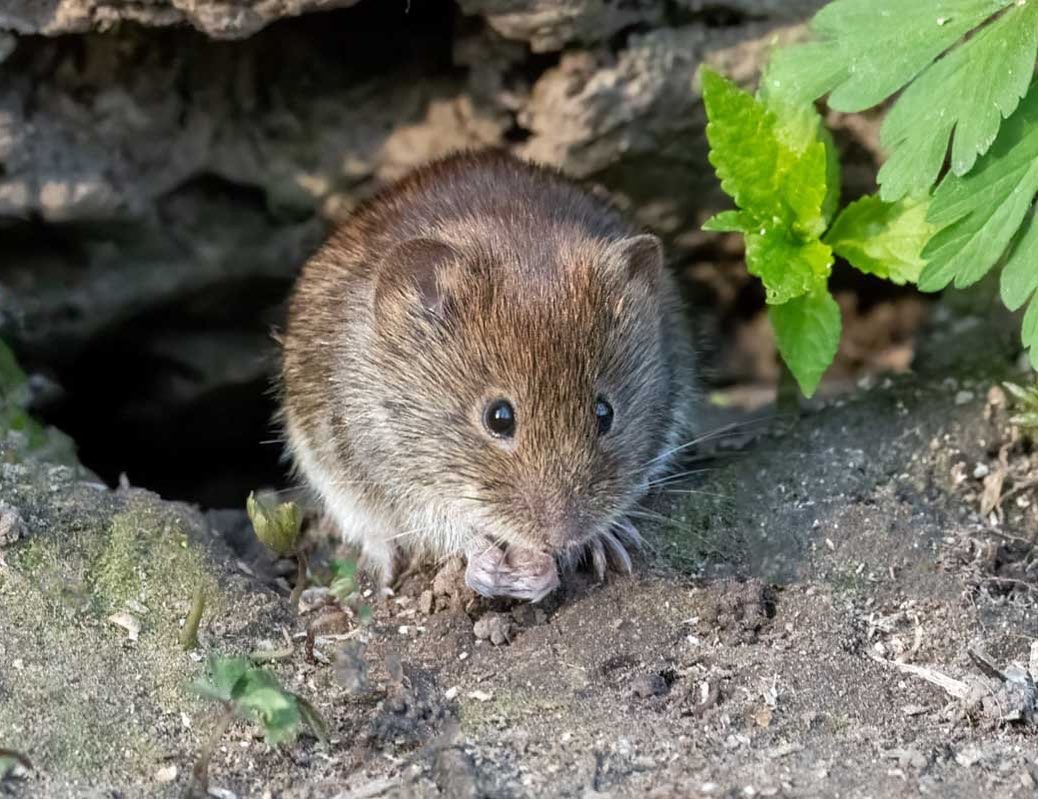
Population cycles of about four years have been reported, with the number of voles in an area booming suddenly only to shrink by the end of the period. It’s during the outbreaks that vole damage usually gets especially dramatic, leaving people’s gardens devastated by the critters.
Voles are easy prey for predators such as coyotes, hawks, owls, and others and thus don’t live long. This is compensated for by extremely high breeding rates, with an average female producing as many as 5 to 10 litters each year.
Since there are normally about 3-6 younglings a litter, chances are that you’ll find your orchard abuzz with the little rodents at some time.
Vole Infestation: Signs and Causes
The primary reason why so many people are looking for rodent control solutions is that members of the Rodentia order, which also includes voles, have a pair of ever-growing incisors in their mouth that need regular sharpening to keep them from getting too long.
This means that the little critters will go around in search of something to chew on, like grass or other plants, destroying people’s gardens and vegetable patches as they try to keep their teeth in check.
Apart from feeding on the plants that we try to grow, voles cause heavy ornamental damage since they bring about holes in the ground approximately 1 to 2 inches in diameter, which are burrow openings leading to their underground tunnels. To see them, you might need to move the overhanging grass aside.
Depending on the exact species, you might also see above-ground runways that look like dark patches against the grass, connecting multiple burrows. This is also a positive sign that vole eradication is needed.
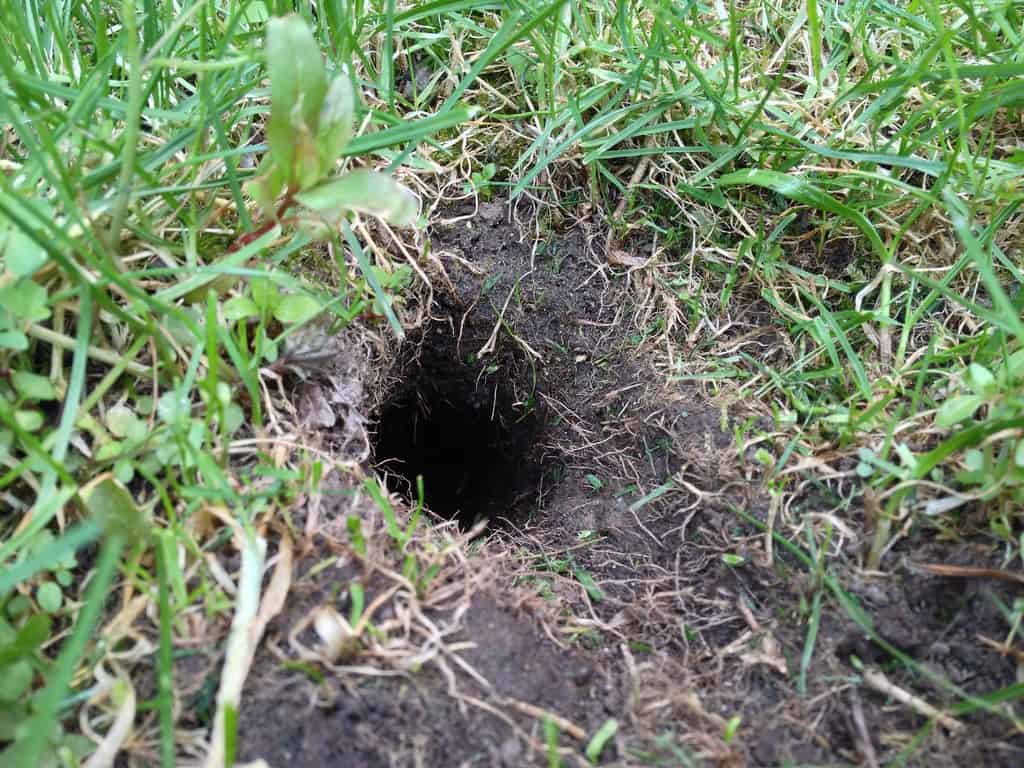
Finally, voles are notorious for what is called girdling of trees, that is, completely consuming a strip of bark that goes around the trunk, thus preventing nutrients from going up along the tree and causing it to die over time.
Sometimes you’ll see patches of bark missing where voles have been gnawing on it, while in other cases you might need to remove the soil partly to see the underground damage.
Other possible symptoms of vole presence include greenish droppings that resemble rice grains in shape, usually found around burrow entrances. Chances are that you’ll also come across freshly clipped grass if you’re suffering from vole invasion to your property.
Are Voles Dangerous?
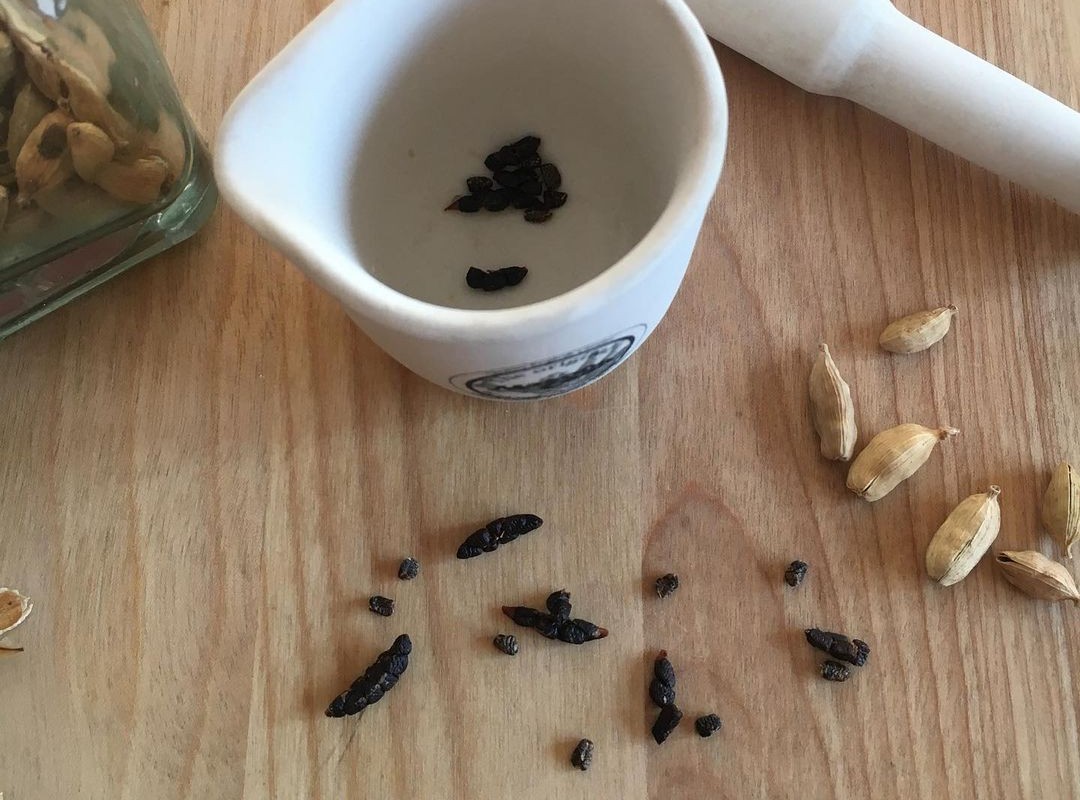
Although not particularly menacing in appearance, the tiny critters can cause more trouble than you probably think.
One argument for vole removal is that these animals can bite, and by doing so they potentially spread dangerous infections such as rabies and tularemia but are classified as low-risk wild animals in this respect.
This doesn’t mean, however, that biting is a common behavior in voles, since it appears that more often than not these naturally vulnerable rodents will scoot when confronted by a human.
Unfortunately, bites aren’t the only possible way that infections and parasites are disseminated. Like most animals, voles leave potentially contaminated feces and urine wherever they happen to reside, exposing us – property owners– to pathogenic microorganisms, helminths, and the like.
How Can I Get Rid of Voles?
It’s only natural that seeing your favorite plants eradicated makes you want to eradicate voles as well, but getting rid of the critters can be a challenge, especially when their population is booming. You’ll need to take preparatory measures, paired with an effective vole treatment, and make sure that your property isn’t likely to attract more rodents any time soon.
The step-by-step vole removal guide for homeowners is as follows:
1. Find Out What’s Attracted the Pest in the First Place
One thing voles can’t stand is a lot of clear space. They depend heavily on the ground covering, making it worthwhile to mow your grass on a regular basis and keep your garden weed-free. The animals might leave as soon as they find themselves unprotected against predators such as owls and badgers.
If you have any piles of wood or shrubs in or near your garden, there’s still a possibility that voles will use those as hiding places. Again, consider removing what you can remove, and trim your bushes so that there’s not much green left close to the ground.
Cases have been reported where voles used deep snow to hide during the winter. It’s therefore advisable to avoid snow piling around shrubs and trees.
Finally, food is a universal attraction to wild animals, which means that bird feeders will likely cause more voles to visit your property unless you hide them away.
2. Choose the Vole Removal Technique That Will Work for You
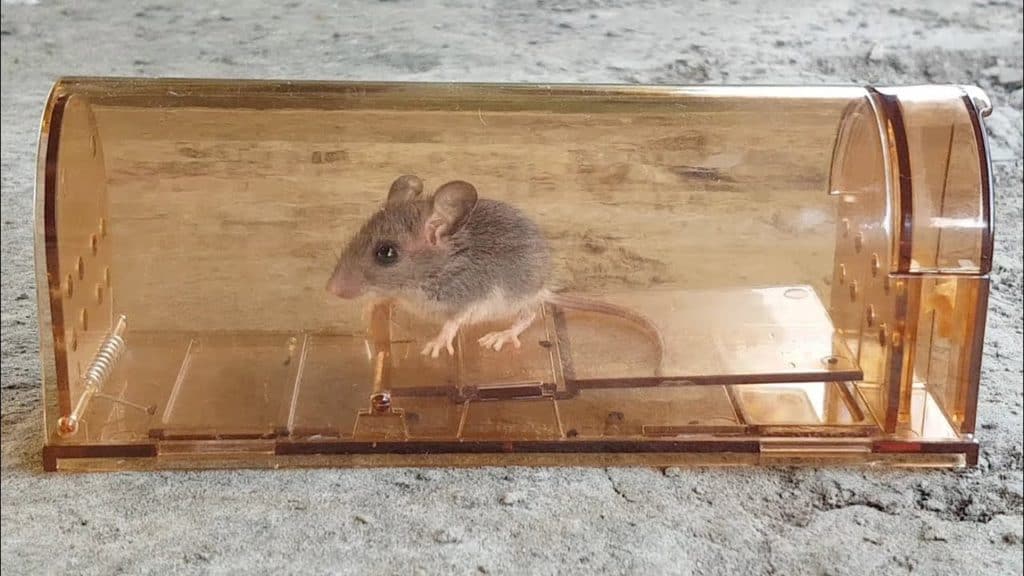
When it comes to actually send voles packing, the market has a lot to offer depending on how massive the infestation is as well as the size of your property.
Apart from modifying vole habitat, there’s a wide range of solutions that can keep the unwelcome guests off your territory. The most common product categories are vole traps, baits, and repellents.
Trapping is an effective way of removing voles from your garden provided that there aren’t too many animals. The group can be further divided into two subclasses based on whether the trap is meant to kill the animal or leave it alive.
You should probably opt for the latter if you know exactly how to deal with the vole after you’ve caught it and are 100% sure it won’t pay you another visit after that. Remember you’ll need to bury dead animals or use plastic bags to dispose of them to prevent infection spreading if you choose to use a deadly trap instead.
Traps can be baited for increased efficiency. However, it’s less critical with voles than trap placement, since these rodents are very reluctant to take detours from their runways. This means you’ll need to place multiple traps along the paths that you’ve found to be vole routes, usually at least a dozen for a relatively small garden.
Apart from baits used to lure vole into a trap, there are deadly substances that can be used to eliminate voles. The most common of them commonly referred to as anticoagulant baits, keep the rodent’s blood from clotting, which leads to death overtime.
Unlike trapping, this method takes time, and you’ll probably need to re-apply it up to 3 times before you notice the result, but it’s quite effective provided that the bait is placed along the runways. There’s an imminent risk of poisoning to predators such as cats and dogs, however, so remember to check the label before using such baits.
Another pesticide that’s registered to use on voles is zinc phosphide, a compound that causes the production of phosphine, a highly toxic gas, in the animal’s stomach when eaten. Just like with other rodenticides, it can be dangerous to other animals and even humans if injected.
Finally, rodent repellents are a humane way of keeping the pest away and your plants safe. Ultrasonic devices emitting audio signals that humans can’t hear but voles are supposed to dread are available alongside traditional formulations such as granules.
It’s not likely, however, that this method will work if you already have an extensive network of vole runways underground leading to your trees and other plants.
3. Take Measures to Prevent Re-Infestation
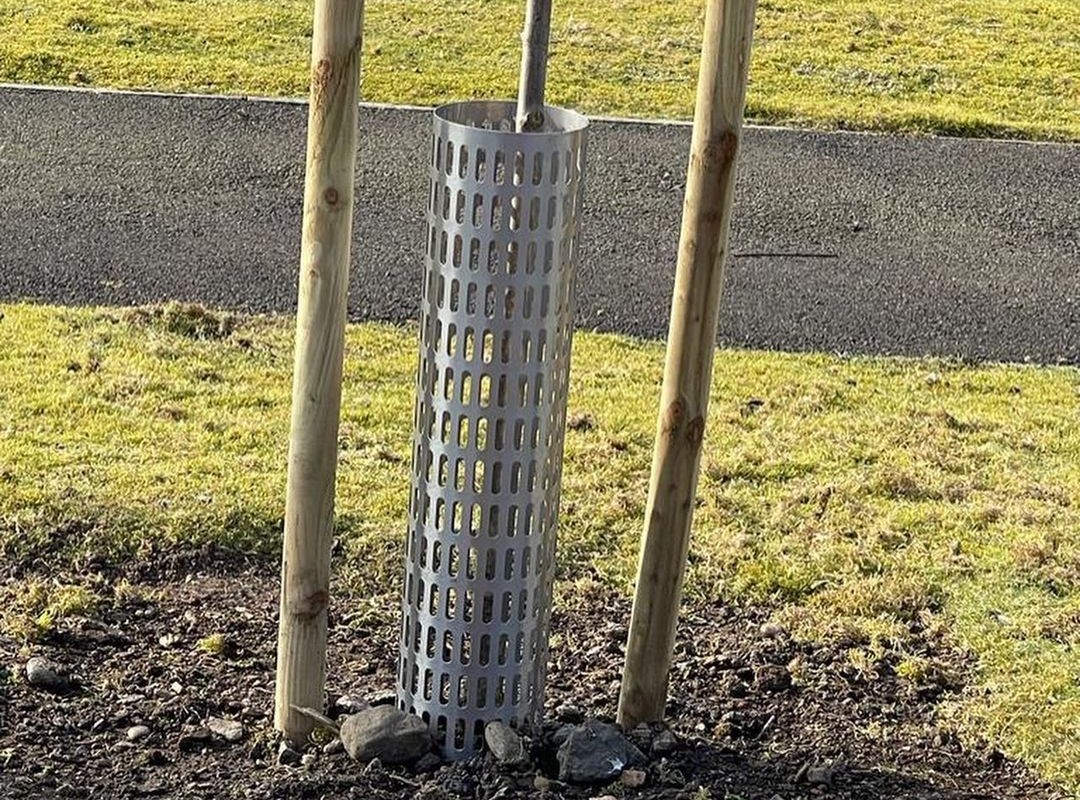
Possible long-term solutions include fencing and regular use of repellents to deter the critters. Please note that you’ll need to bury the bottom of your fence into the ground deep enough to prevent voles from getting under it, and choose one with a mesh size of no more than 0.25 inch.
Those whose fruit trees like cherries and avocadoes have been affected can use materials such as hardware cloth, heavy-duty plastic, or sheet metal to cover the trunks.
Make sure the cylinders you form aren’t too small for the tree to grow in and can’t be pushed over easily, and make them tall enough if weather tends to be snowy in winter; otherwise voles might climb over the fence and ruin your effort.
If you’ve been wondering what is a natural way to get rid of voles, considering cats and other predators as a possible candidate, remember that these methods will most likely fail due to the rodent’s tendency to spend most of its time underground, in burrows that are hard to reach.
Top 6 Vole Treatments
1. Acmind Mouse Trap: The Best Vole Treatment for Those Who Want to Go Nuclear
[amazon box=”B07FDZY21W” template=”vertical” tracking_id=”how-to-get-rid-of-voles-20″ button_text=”Check price on Amazon”]
Unlike the previous product, this is a deadly trap that crushes the vole’s body the moment it gets caught. It features a bait cup with a sensitive pedal leading to it so that the trigger lock gets activated as the rodent steps onto it looking for food, killing it quickly.
The manufacturer specifies that you should place the traps so that the critter can’t approach it from the sides. Moreover, long-lasting treats like peanut butter are preferable over takeaway meals such as cheese, which is too easy to grab before the trap gets activated.
One great advantage of the product is how affordable it is considering that the pack consists of 6 traps. Like other similar products, they should be placed near the voles’ usual runways for maximum effect.
| Pros: | Cons: |
|
|
2. CaptSure Original Humane Mouse Traps: The Best Way to Get Rid of Voles Without Hurting Them
[amazon box=”B073GRKG88″ template=”vertical” tracking_id=”how-to-get-rid-of-voles-20″ button_text=”Check price on Amazon”]
Specifications:
- Material: Plastic
- Size: Small
- Number of Pieces: 2
- Item Weight: 0.28 Pounds
- Item Dimensions LxWxH: 6.7 x 2.4 x 2.5 inches
- Target Species: Chipmunk, Mouse, Rat, Vole, Hamster, Mole
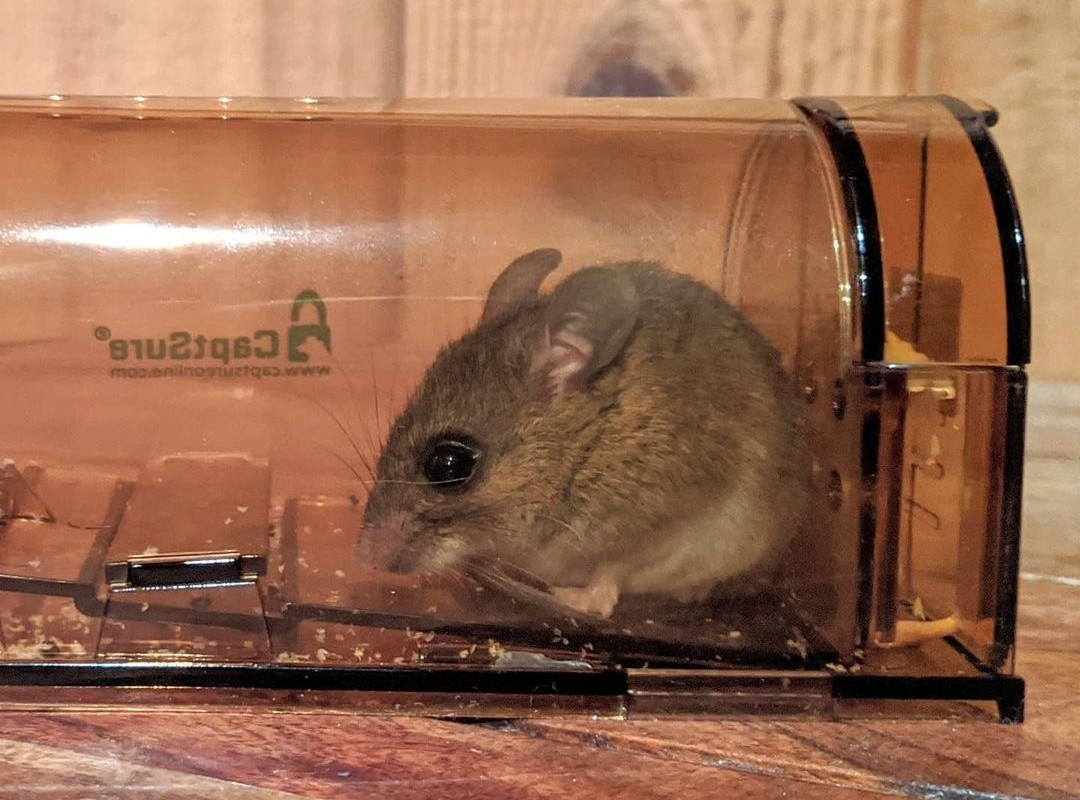
If you don’t like the idea of killing and adorable fluffy pest that just destroyed your long-cherished garden, you’ll probably appreciate the solution offered by CaptSure. This is a fully humane trap that doesn’t involve glue or poison but simply closes as soon as a rodent enters it, leaving it unhurt yet unable to get out.
There’s a bait compartment included that you fill with food like peanut butter to attract voles. You’ll need to close this compartment before placing the trap, so the rodent won’t actually be able to enjoy the meal.
| Pros: | Cons: |
|
|
3. JT Eaton 166004 709-PN Bait Block Rodenticide Anticoagulant Bait: An Affordable Yet Powerful Vole Extermination Tool
[amazon box=”B007ICK5RG” template=”vertical” tracking_id=”how-to-get-rid-of-voles-20″ button_text=”Check price on Amazon” button_detail=”https://shareasale.com/r.cfm?b=410159&u=2583381&m=43235&urllink=www%2Edomyown%2Ecom%2Fjt%2Deaton%2Dbait%2Dblock%2Drodenticide%2Dpeanut%2Dbutter%2Dflavorizer%2D709pn%2Dp%2D7500%2Ehtml&afftrack=how%20to%20get%20rid%20of%20voles” button_detail_text=”Check price on DoMyOwn”]
Specifications:
- Active Ingredient: Diphacinone 0. 005%
- Color: Green
- Capacity: 9 Pounds
- Item Dimensions LxWxH: 11 x 11 x 10 inches
- Target Species: Rats and Mice
If you’ve been wondering how to kill voles without endangering yourself, you might like this anticoagulant bait based on 0.005-percent Diphacinone, a compound that prevents blood clotting in small rodents, causing death over up to 7 days of feeding.
This means you’ll have to wait before you see the result, but there’s also an advantage to it – the risk of secondary poisoning if your pet happens to eat a killed vole is this reduced.
One pail contains as many as 144 1-ounce rodenticide treats formulated with peanut butter flavoring to attract mice and rats (and, hopefully, voles). The product is thus quite affordable yet effective.
| Pros: | Cons: |
|
|
4. JT Eaton 902R Top Loader Bait Station: An Increased-Safety Vole Eradication Solution
[amazon box=”B001QT4F1O” template=”vertical” tracking_id=”how-to-get-rid-of-voles-20″ button_text=”Check price on Amazon” button_detail=”https://shareasale.com/r.cfm?b=1724849&u=2583381&m=107474&urllink=diypestcontrol%2Ecom%2Fjt%2Deaton%2Dtop%2Dloader%2Dbait%2Dstation&afftrack=how%20to%20get%20rid%20of%20voles” button_detail_text=”Check price on DIY Pest Control”]
Specifications:
- Color: Black
- Item Weight: 1pounds
- Material: Plastic
- Includes: Trap only, Bait not included
- Item Dimensions LxWxH: 15 x 4 x 12 inches
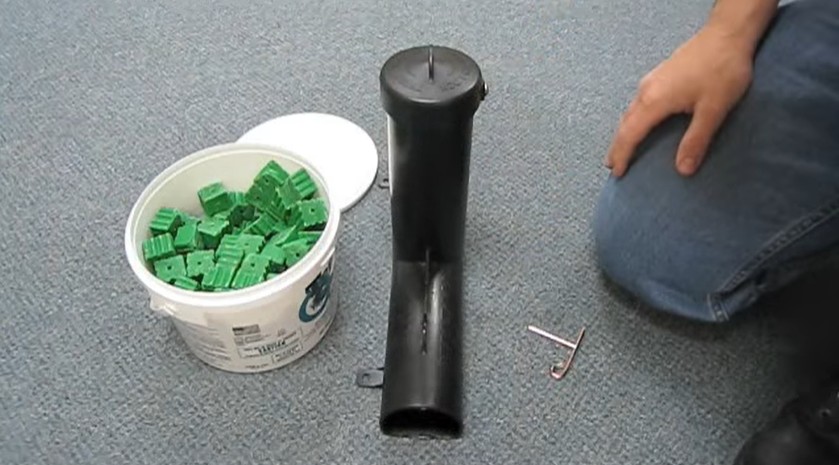
This item pairs perfectly with the above product and can be used to dispense poisoned vole baits to small rodents while keeping children and non-target animals out of harm’s way.
Apart from ensuring extra safety, the tool provides moisture protection and flexibility in positioning as it can be anchored to a wall or placed vertically on the ground depending on the situation. With anticoagulant baits, you don’t have to worry about voles dying inside as it doesn’t happen this quick.
| Pros: | Cons: |
|
|
5. I Must Garden Mole & Vole Repellent: The Best Environmentally Safe Vole Repellent
[amazon box=”B01FWGWHIO” template=”vertical” tracking_id=”how-to-get-rid-of-voles-20″ button_text=”Check price on Amazon”]
Specifications:
- Active Ingredients: Castor Oil 20%
- Item Form: Granules
- Item Weight: 10 Pounds
- Package Dimensions: 11 x 4 x 16 inches
- Target Species: Moles, Gophers, Chipmanks, Voles, Skuns, and other burrowing animals
With a natural formula based on peppermint, castor, and cedar oil, these I Must Garden granules pose no danger to humans of any age or pets while effectively deterring voles and moles (if you happen to have these too).
The product’s composition ensures excellent performance during the winter, preventing non-hibernating critters from damaging your lawn. Besides, it causes no grass damage and works as a prevention strategy before voles even arrive.
| Pros: | Cons: |
|
|
6. Bonide – Molemax Mole & Vole Burrowing Animal Repellent: Affordable and Easy to Use Vole Removal Granules
[amazon box=”B004CSWPS6″ template=”vertical” tracking_id=”how-to-get-rid-of-voles-20″ button_text=”Check price on Amazon” button_detail=”https://shareasale.com/r.cfm?b=1724849&u=2583381&m=107474&urllink=diypestcontrol%2Ecom%2Fbonide%2Dmolemax%2Dmole%2Dvole%2Drepellent&afftrack=https%3A%2F%2Fpestcontrolhacks%2Ecom%2Fbest%2Dvole%2Drepellent%2F” button_detail_text=”Check price on DIY Pest Control”]
Specifications:
- Active Ingredient: Castor Oil 10%
- Item Form: Granules
- Item Weight: 10 pounds
- Package Dimensions: 14.5 x 4.5 x 15.5 inches
- Target Species: Moles, Voles, Gophers, Armadillos, Skunks, Rabbits, Ground Squirrels and other burrowing animals
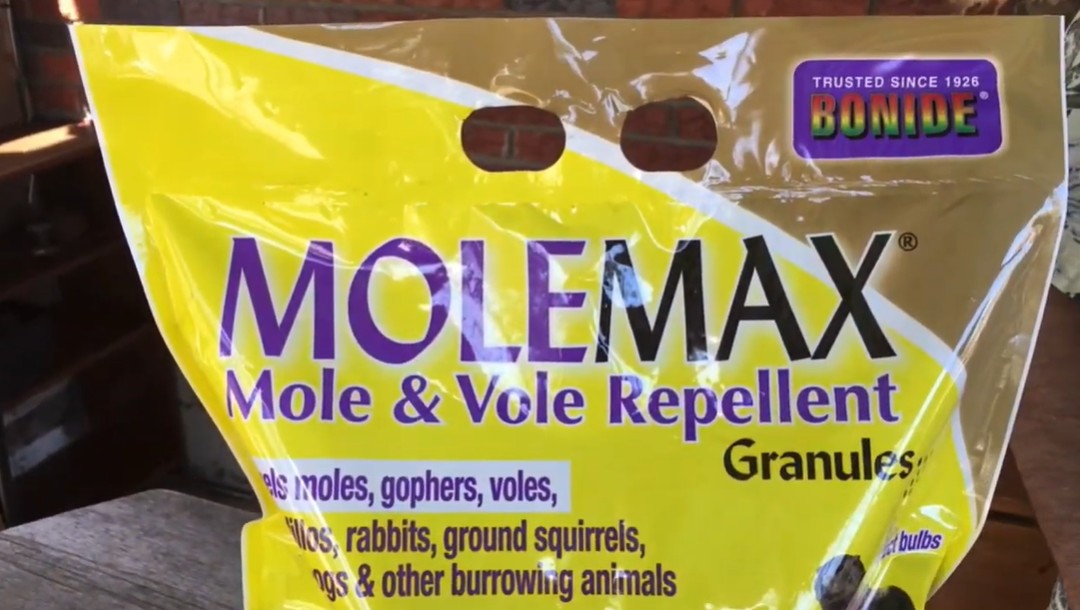
If you’ve been wondering how to control voles in your garden without too much investment of time and money, you’ll appreciate this easy-to-use and economical product.
A 10 lb. bag of this vole repellent covers an area as big as 5,000 square feet, offering long-lasting protection over three 3 months. It’s thus a money-saving, versatile solution against voles and a number of other pests such as moles, rabbits, ground squirrels, and more.
The castor-oil-based formula is safe to use around kids and pets but has the ability to penetrate the ground for deep garden protection.
| Pros: | Cons: |
|
|
FAQ
What Does a Vole Hole Look Like?
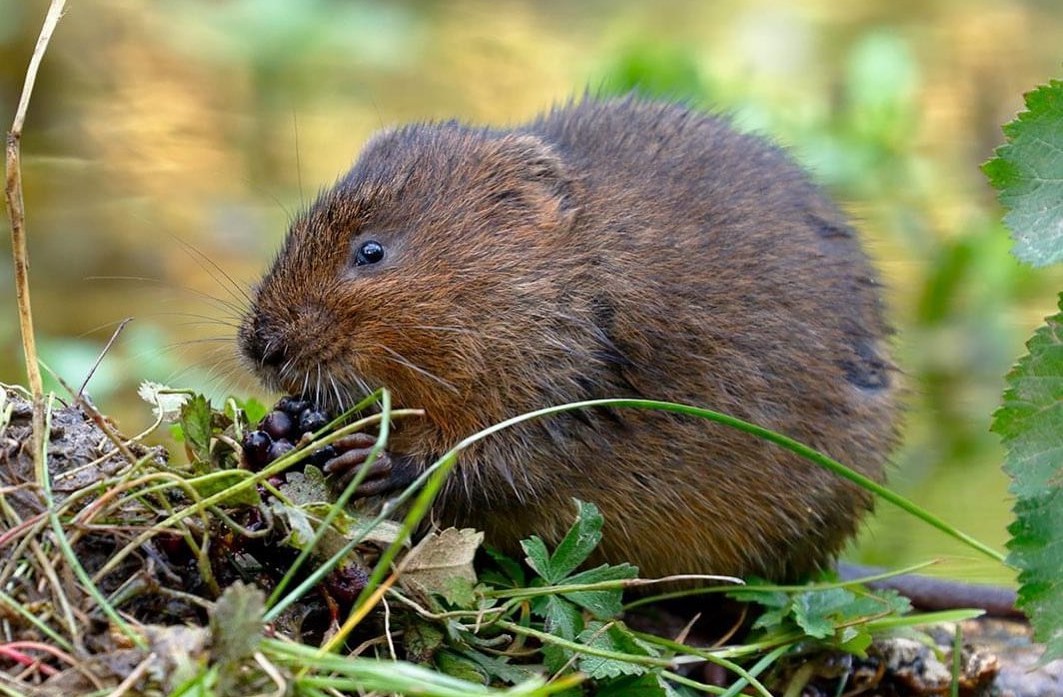
Vole burrows are usually arranged in systems that consist of dark, snake-like runways of destroyed grass that are very close to the surface and holes proper, that is, burrow openings up to 2 inches in diameter.
When Are Voles Most Active?
These rodents are active day and night, throughout the year, without hibernation or lengthy period of sleep. However, population cycles in voles have been studied extensively, showing that their number tends to boom at some point before shrinking back within an average of four years.
When it comes to breeding, voles are especially active in the spring, although there’s nothing to prevent them from mating throughout the year.
Do Voles Carry Diseases?
They do; but cases of infection are extremely rare, making voles what is called low-risk wild animals in terms of rabies, probably the most feared disease when it comes to rodents. Other conditions known to be carried by voles are tularemia, leptospirosis, and more.
Do Voles Ruin Grass?
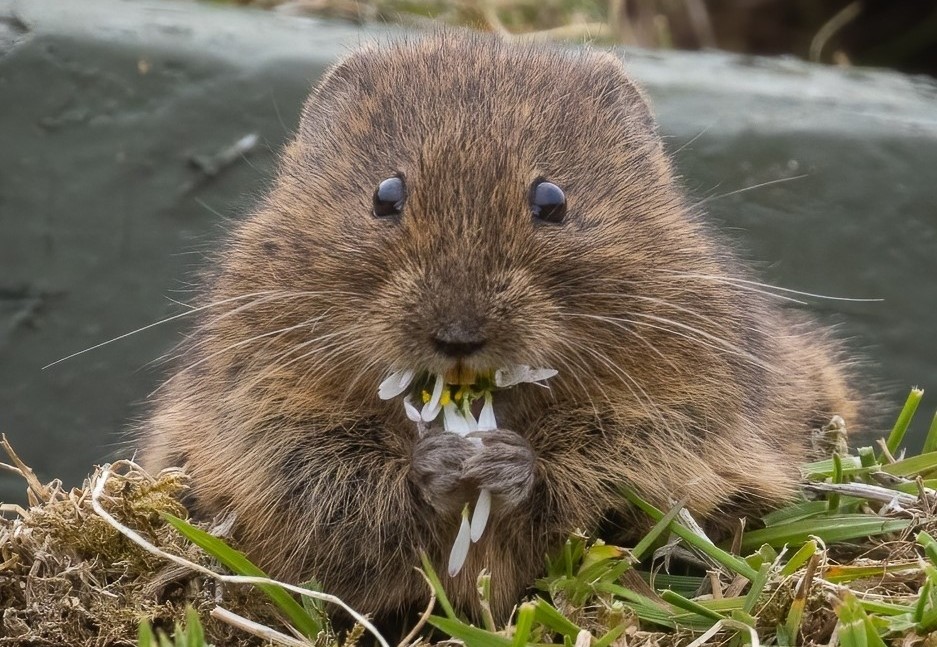
Yes, they do. Shallow tunnels across the lawn are the primary sign of vole infestation, and the lawn damage that they cause by gnawing on the grass and arranging their burrows underground can be hard to fix.
How Big Do Voles Get?
There are several types of voles that differ slightly in size. However, it’s safe to say that an average adult vole will measure approximately 5 to 7 inches long, the short tail included. Larger individuals exceeding 8 inches have been reported as a rarity, too.
Also read: Gopher and Mole Removal Prices

Key Takeaways
Although voles aren’t easy to eradicate when especially active, a combination of measures to make their current habitat unwelcoming, effective vole treatments to expel existing visitors, and prevention can do a great job of keeping the critters off your property.
When shopping for vole solutions, it’s best to base your decision on safety, especially if you have pets or children, and how humane you’d like the treatment to be. There are products that kill small rodents, while others, such as humane traps, help us relocate them to a friendlier environment.
Whichever vole control method you choose, remember that it will only work in combination with the above pre- and post-treatment steps.
What vole remedies have you already tried? Did they prove inadequate? Feel free to share your experience of fighting voles in the comments section!
References:
- Rabies(Massachusetts Department of Public Health):
https://nj.gov/health/cd/documents/Rabies_Chapter_2017_Updated.pdf - Population cycles in voles and lemmings: state of the science and future directions(University of Florida):
https://wec.ifas.ufl.edu/pdf/oli/Oli%202019%20Population%20Cycles%20Mammal%20Review(2).pdf

